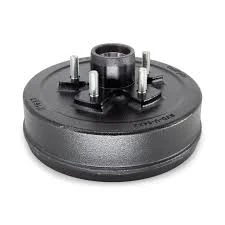
-
 Afrikaans
Afrikaans -
 Albanian
Albanian -
 Amharic
Amharic -
 Arabic
Arabic -
 Armenian
Armenian -
 Azerbaijani
Azerbaijani -
 Basque
Basque -
 Belarusian
Belarusian -
 Bengali
Bengali -
 Bosnian
Bosnian -
 Bulgarian
Bulgarian -
 Catalan
Catalan -
 Cebuano
Cebuano -
 Corsican
Corsican -
 Croatian
Croatian -
 Czech
Czech -
 Danish
Danish -
 Dutch
Dutch -
 Enska
Enska -
 Esperanto
Esperanto -
 Estonian
Estonian -
 Finnish
Finnish -
 French
French -
 Frisian
Frisian -
 Galician
Galician -
 Georgian
Georgian -
 German
German -
 Greek
Greek -
 Gujarati
Gujarati -
 Haitian Creole
Haitian Creole -
 hausa
hausa -
 hawaiian
hawaiian -
 Hebrew
Hebrew -
 Hindi
Hindi -
 Miao
Miao -
 Hungarian
Hungarian -
 Icelandic
Icelandic -
 igbo
igbo -
 Indonesian
Indonesian -
 irish
irish -
 Italian
Italian -
 Japanese
Japanese -
 Javanese
Javanese -
 Kannada
Kannada -
 kazakh
kazakh -
 Khmer
Khmer -
 Rwandese
Rwandese -
 Korean
Korean -
 Kurdish
Kurdish -
 Kyrgyz
Kyrgyz -
 Lao
Lao -
 Latin
Latin -
 Latvian
Latvian -
 Lithuanian
Lithuanian -
 Luxembourgish
Luxembourgish -
 Macedonian
Macedonian -
 Malgashi
Malgashi -
 Malay
Malay -
 Malayalam
Malayalam -
 Maltese
Maltese -
 Maori
Maori -
 Marathi
Marathi -
 Mongolian
Mongolian -
 Myanmar
Myanmar -
 Nepali
Nepali -
 Norwegian
Norwegian -
 Norwegian
Norwegian -
 Occitan
Occitan -
 Pashto
Pashto -
 Persian
Persian -
 Polish
Polish -
 Portuguese
Portuguese -
 Punjabi
Punjabi -
 Romanian
Romanian -
 Russian
Russian -
 Samoan
Samoan -
 Scottish Gaelic
Scottish Gaelic -
 Serbian
Serbian -
 Sesotho
Sesotho -
 Shona
Shona -
 Sindhi
Sindhi -
 Sinhala
Sinhala -
 Slovak
Slovak -
 Slovenian
Slovenian -
 Somali
Somali -
 Spanish
Spanish -
 Sundanese
Sundanese -
 Swahili
Swahili -
 Swedish
Swedish -
 Tagalog
Tagalog -
 Tajik
Tajik -
 Tamil
Tamil -
 Tatar
Tatar -
 Telugu
Telugu -
 Thai
Thai -
 Turkish
Turkish -
 Turkmen
Turkmen -
 Ukrainian
Ukrainian -
 Urdu
Urdu -
 Uighur
Uighur -
 Uzbek
Uzbek -
 Vietnamese
Vietnamese -
 Welsh
Welsh -
 Bantu
Bantu -
 Yiddish
Yiddish -
 Yoruba
Yoruba -
 Zulu
Zulu
rear brake drum
Understanding Rear Brake Drums An Essential Component of Vehicle Safety
When it comes to vehicle safety, the braking system plays an indispensable role, and the rear brake drum is a crucial component within that system. While many car enthusiasts and everyday drivers are familiar with the basics of disc brakes, the brake drums often receive less attention, despite their importance in the overall performance and safety of a vehicle.
What is a Rear Brake Drum?
A rear brake drum is a cylindrical component that houses the brakes of a vehicle's rear wheels. It works in harmony with brake shoes, which press against the inside surface of the drum to create friction and slow down the vehicle. Typically made from cast iron or aluminum, brake drums are designed to endure high temperatures and pressure generated during braking.
How Do Rear Brake Drums Work?
The operation of a rear brake drum involves several parts. When the driver presses the brake pedal, hydraulic fluid from the master cylinder is sent to the brake cylinders located inside the drum. This hydraulic pressure pushes the brake shoes outward against the inner surface of the drum. The friction created between the shoes and the drum slows the vehicle down. As the vehicle stops, the pressure is released, retracting the shoes and allowing the wheel to rotate freely once again.
Types of Brake Systems
There are two primary types of braking systems found in vehicles disc brakes and drum brakes. While disc brakes have become more prevalent in modern cars, especially in front braking systems, many vehicles still use rear brake drums. Drum brakes tend to be less expensive and easier to produce, making them a practical choice for many manufacturers, especially in economy and utility vehicles.
Advantages of Rear Brake Drums
rear brake drum

1. Cost-Effectiveness Brake drums are generally less expensive to manufacture and replace compared to disc brakes, making them a favorite choice for budget vehicles.
2. Effective at High Temperatures Drum brakes can handle higher temperatures better than disc brakes in certain conditions, which can be advantageous for heavy-duty vehicles or during prolonged braking situations.
3. Self-Enhancement Drum brakes naturally help to 'self-energize' during braking, meaning that the shoes push harder against the drum as they rotate, enhancing braking force.
Disadvantages of Rear Brake Drums
Despite their advantages, rear brake drums also have some drawbacks. They tend to dissipate heat less effectively than disc brakes, which can lead to brake fade during extended use. Moreover, drums can be more challenging to inspect and service compared to disc brakes. As brake shoes wear down, periodic maintenance is required to adjust them and ensure optimal performance.
Maintenance and Care
Regular maintenance of rear brake drums is crucial for safe vehicle operation. Drivers should periodically check the condition of their brake shoes and the drum's inner surface for wear and tear. It's also advisable to have the braking system inspected regularly by a qualified mechanic. This proactive approach can prevent more significant issues down the line, ensuring the vehicle remains safe and reliable.
Conclusion
In conclusion, while rear brake drums may not always be in the spotlight, they are an essential part of a vehicle’s safety and braking performance. Understanding their function, advantages, and maintenance requirements can empower drivers to make informed decisions regarding their vehicles and ensure safe travels on the road. Whether driving a compact car or a heavy-duty truck, paying attention to the rear braking system can make a significant difference in overall vehicle performance and safety.
-
Rear Drum Brakes Maintenance TipsFréttirAug.04,2025
-
Key Components Affecting Brake Drum FunctionFréttirAug.04,2025
-
Important Inspection for Truck Drum BrakeFréttirAug.04,2025
-
How to Prepare for Changing Rear Drum BrakesFréttirAug.04,2025
-
Essential Tools for Cleaning Drum Brakes ProperlyFréttirAug.04,2025
-
Brake Drum Function GuideFréttirAug.04,2025
-
Safety Features of Red Brake DrumsFréttirAug.01,2025
